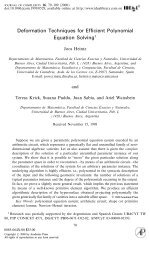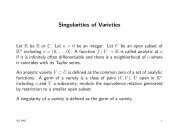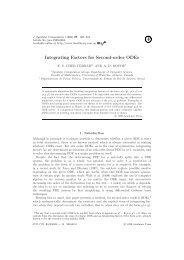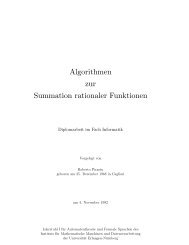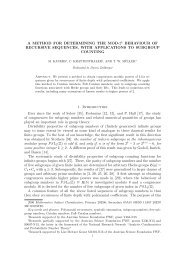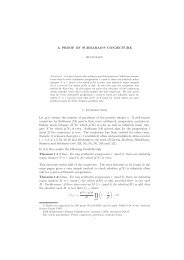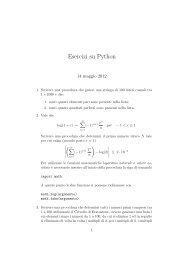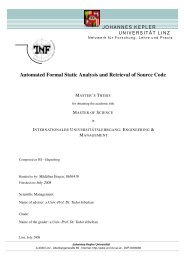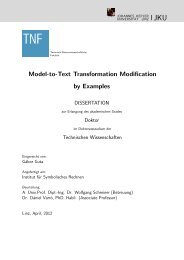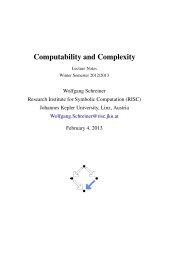Chapter 7 Local properties of plane algebraic curves - RISC
Chapter 7 Local properties of plane algebraic curves - RISC
Chapter 7 Local properties of plane algebraic curves - RISC
You also want an ePaper? Increase the reach of your titles
YUMPU automatically turns print PDFs into web optimized ePapers that Google loves.
and consequently<br />
(n − 1)(n − 2) ≥ ∑ r i (r i − 1).<br />
Indeed, the bound in Theorem 7.3.5 is sharp, i.e. it is actually achieved by a certain<br />
class <strong>of</strong> irreducible <strong>curves</strong>. These are the <strong>curves</strong> <strong>of</strong> genus 0.<br />
Definition 7.3.4. Let F be an irreducible curve <strong>of</strong> degree n, having only ordinary<br />
singularities <strong>of</strong> multiplicities r 1 , . . .,r m . The genus <strong>of</strong> F, genus(F), is defined as<br />
genus(F) = 1 m<br />
[(n − 1)(n − 2) −<br />
2<br />
∑<br />
r i (r i − 1)].<br />
i=1<br />
Example 7.3.4. Every irreducible conic has genus 0. An irreducible cubic has genus<br />
0 if and only if it has a double point.<br />
For <strong>curves</strong> with non-ordinary singularities the formula<br />
m<br />
1<br />
2 [(n − 1)(n − 2) − ∑<br />
r i (r i − 1)]<br />
is just an upper bound for the genus. Compare the tacnode curve <strong>of</strong> Example 1.3,<br />
which is a curve <strong>of</strong> genus 0. We will see this in the chapter on parametrization.<br />
i=1<br />
109



